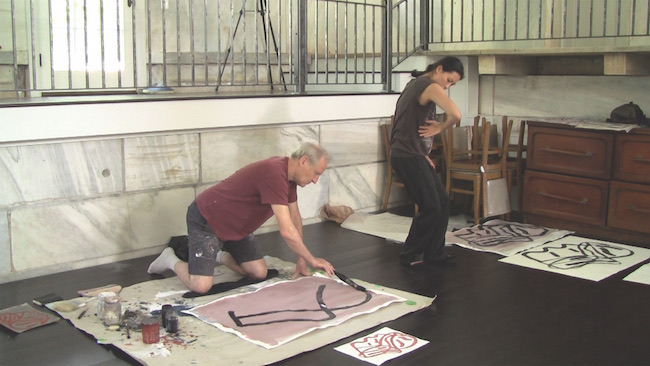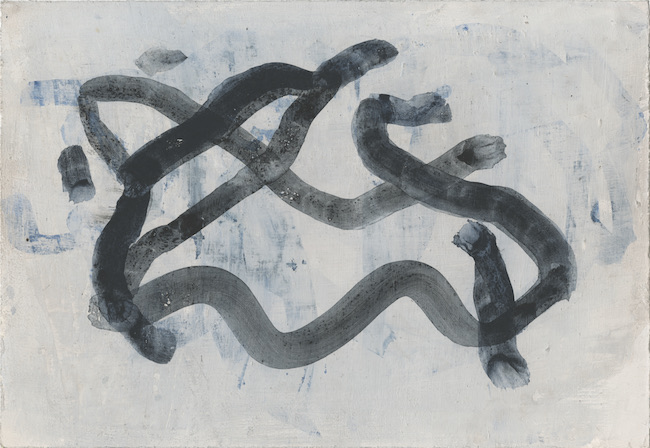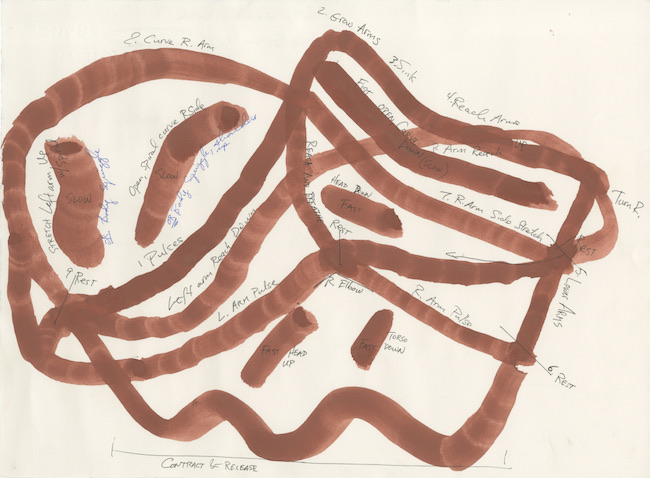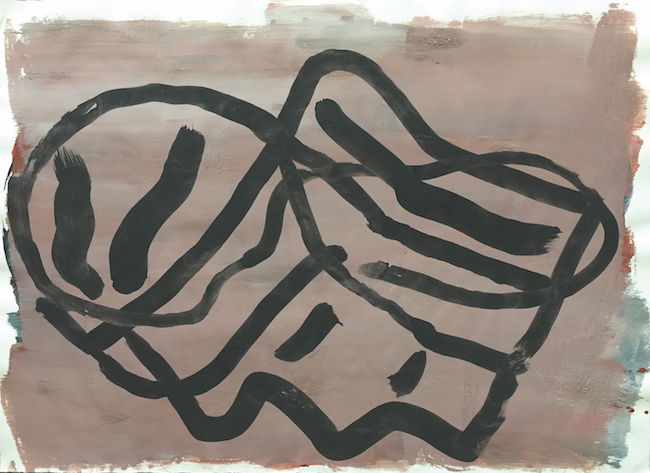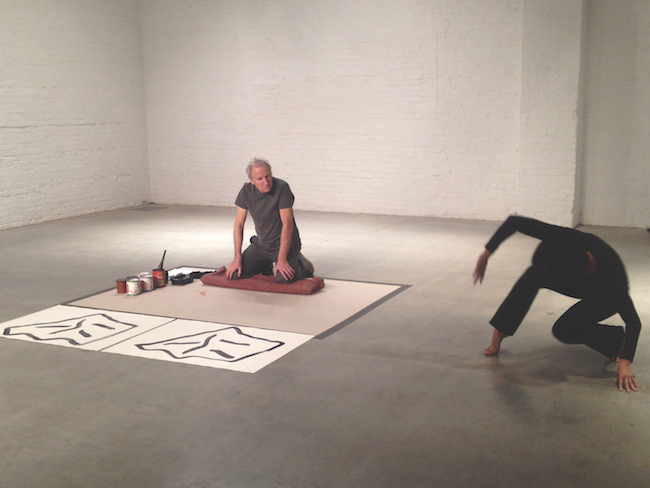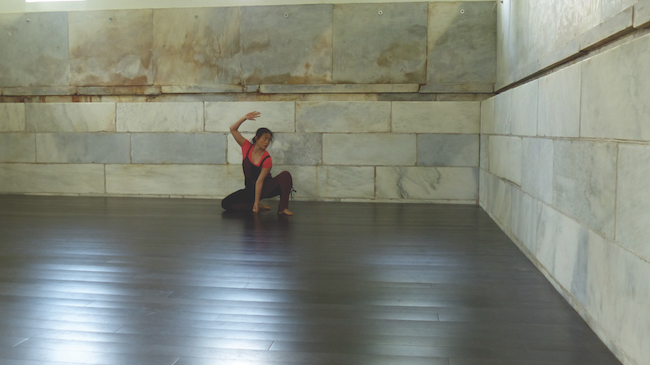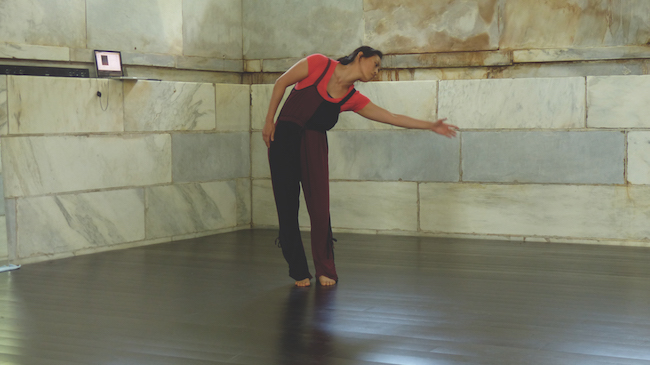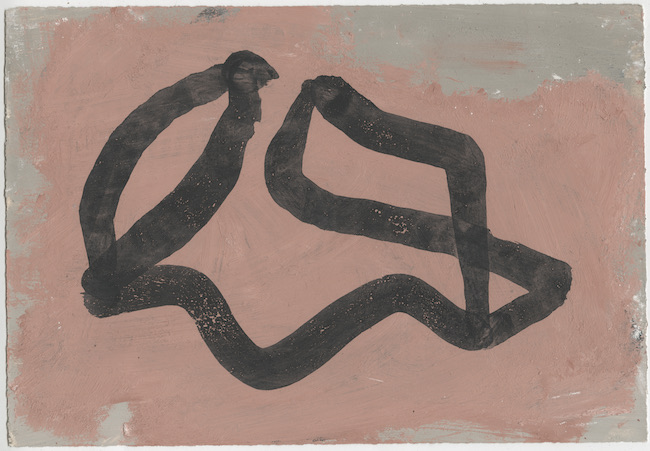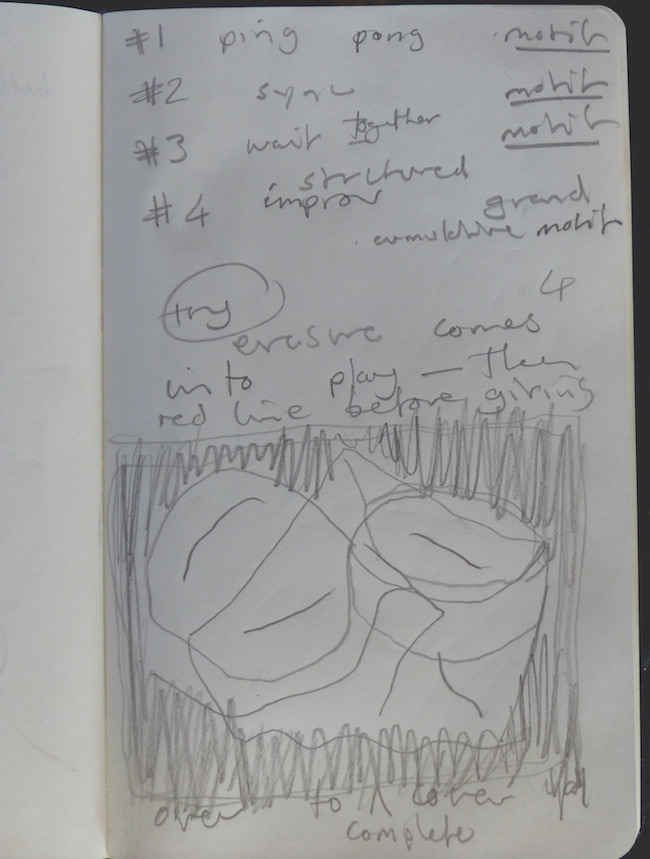The Interior Landscape of “Full Circle” by Lex Braes
In late 2013, Annie Wang and I began our collaboration with the idea to make a live performance for an improvisational dance and drawing. Following a six-month period in free-improv session work, we created a score for our choreography. The score is a drawing of structural integrity that serves as the origin point for both the dancer and painter to interpret during an improvised performance. Early experiments in session-work were kept open with minimum directives, in time and subject, and we settled for 3 minute durations. Then, a word, thought, or feeling, and later a piece of music were introduced as a springboard. Some word examples, “mass” “volume” “water” “weight”, and later while in structuring mode, we added “the Fool’s Circle” - an electronic music composition by Pauline Oliveros. We laid down groundwork for the abstract discoveries that would inform the pictorial motifs and phrase movements, repetitions, combinations etc. For 6 months we engaged in free intuitive open sessions. Afterwards we reined in our discoveries, and made some decisions about what we could build on and what to leave behind. This editing process was important to create a more controlled environment with limitations. A dynamic motif of as in an art object is one thing, but for our purposes we needed to deconstruct the drawing into its constituent parts in order to re-make at will or as desired. Not a description of something in particular but more a personal grid or system in which we maintain the sense of being present in experience as we travel through our interior landscapes.
This earlier session work allowed us time to investigate our particular body movements, as they informed and influenced each other. The Full Circle performance examines ritual, memory, erasure and repetition, cyclical energies that ebb and flow like a pulse, a work whose presentation echoes the artistic process itself.
A retreat in Vermont gave us the opportunity to focus and work through, to redefine boundary conditions together. This stage had a more intense atmosphere, artistically contentious yet also creatively rewarding. Ideas held as sacred must be released, in order to make room for new possibilities and eventual growth. We can’t overstate the importance of structuring while forming the score. Our shared understanding of process, Imposing limitations allowed the structure to evolve, into a more open platform to hold the metaphysical dialogue. Through a common basis of understanding and during this most challenging period, we found trust Structural integrity and commitment to intention are vital to any successful design. We were understanding how to express more freely in performing the score’s directives. With complete faith in the creative potential of the process. Knowing that a line drawn with a brush could be a diagrammatic directive for a dance movement, collaboration drawing began taking a shape, a sheet of paper became a stage plan.
A Dancer’s perspective by Annie Wang
This project began as an exploratory conversation between two artists, and developed into a performative version of the rituals that we go through in order to express, to remember, to capture, and ultimately, to let go. The act of witnessing each other’s practice provided fresh insights into the work of making art, from which we built our score. Watching the freedom of a painter’s brush, how it can move anywhere without regard for gravity or the physical mechanism of movement, inspired me to explore abstract shapes and disconnections in my own body. Seeing Lex painting over his own work gives his painting an urgency, a “nowness” that requires an audience to observe the action in real time. We also took care to emphasize those elements that are common to us both: the use of repetition, line, gesture, and volume. The final score and the performance are artifacts of our creative process, but like the paintings that are formed and subsequently erased, it serves as a reminder that experience is immediate and visceral, but lost to time like a dance - what remains behind is in a memory: powerful but illusory like a painting.
A Painter’s perspective by Lex Braes
The nature of dance and of all live performances is that they exist afterwards only in the memory, whereas the brush leaves a visible trace of its movement. The repetition in drawing, particularly once the resolution of our 3 minor motifs were found: #1 mountain, #2 and #3 lungs or bellows, and #4 when all three motifs are drawn together to produce the fourth major and final motif. The routine of tracing, undulations, directions, timing between beginning and ending a line, the rhythmic pulse of Oliveros recording, now securely looped in a never ending continuation, life’s breath itself. My brush newly informed and controlled in ways only made possible by connections across borders of difference, always the desire to stretch for more. The brush and the body were no longer descriptive, tracing, charting the up’s and down’s over a mountain side itself, lungs expanding and contracting bellows rising falling, an interior landscape an imagined score drawing. With a more informed and a simpler acceptance of a moment fully appreciated, engaged immediacy through loaded brush touching paper.
By the time we adopted Oliveros musical composition “The Fool’s Circle”, we were deeply immersed in the creative process, and began thinking of a live performance as a real possibility. A score that is not built from outside elements or directives, but rather from an artistic call and response that we developed together to guide the performance. Not about an external experience creatively made but the inner experience was the performance core. Each minor motif is painted in a bone black pigment, then covered over with a white zinc chalk ground, and repeated. Annie retraces her own dance phrase motifs so we reflect each other’s gestural language, then repeat. We continue laying out each of the 3 motifs independently, repeat and retract, while slowly building momentum towards the 4 th , the accumulation of all 3 together, drawn with a primitive earth red line, but again only to be retracted by covering over, and leaving but a faint trace of a memory. With erasure, the potential for continuation is revealed to be more pause than conclusion.
Drawing is left to exist in the memory with the dance, and the audience is essentially involved in the journey in making Full Circle. Together we have contemplated gestural expressions, observed personal feelings, listened to life’s breath rising and falling, fast and slow. Performed, erased and performed again on a ground plane of stage and on the picture plane of paper, all enveloped in the sounds from Pauline Oliveros accordion bellows.
Listening deeply to “the Fool’s Circle” while working on the score drawing, allowed much more than we could’ve imagined possible. Looking with considered thought at Annie’s physical movements and gestures gave my hand and eye the spatial dimension for the pictorial motif. There’s a duality in the dialogue between the physically seen exterior and the unseen spiritual interior. We found deeper control to contemplate in gesture as we traced familiar paths although never repeated in the same way. Balanced between the duality of two poles we could only move onwards.
Full Circle was performed live at Show Room Gowanus 20 th November 2014.
We’d like to thank the genius of Pauline Oliveros for creating the Fool’s Circle, which touched and moved us in making our Full Circle in homage.. To Jeannie Weissglass of Showroom Gowanus who generously hosted our premier performance in her gallery and last but not least to an audience who shared with us in the journey.
